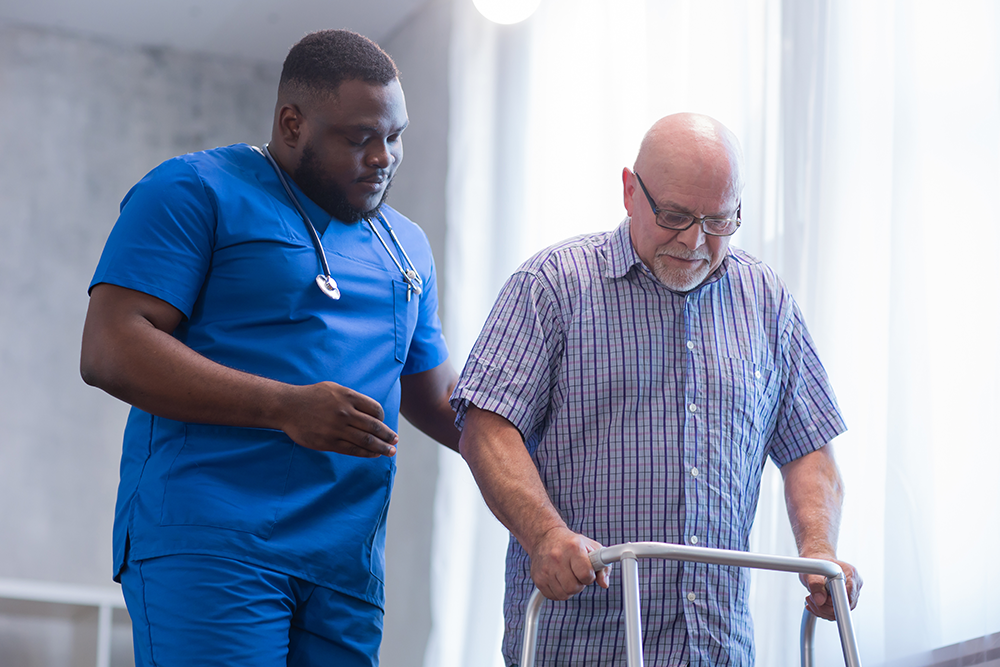Physical therapy for seniors: what is it and how can it help? Suppose you have ever had an injury, pain, recurrent falls, or changes to your walking or otherwise daily mobility. In that case, you’ve likely heard of physical therapy or have been a patient yourself. Physical therapy for seniors is a form of healthcare that combines prescribed exercise, therapeutic activities, functional mobility, patient education, and rehabilitation to help heal and restore everyday function. Physical therapists are movement experts in rehabilitative and preventative care, working to improve one’s quality of life. As of 2016, a Doctorate of Physical Therapy is required for all professional physical therapy programs. Physical therapy is found across the lifespan, from pediatrics in the newborn stages to geriatrics in the older adult years.
When Physical Therapy May Be Indicated
For those with a recent injury or surgery to a muscle, bone, or joint, physical therapy is typically recommended to assist in the healing and recovery process until normal function has been restored. For those experiencing new, ongoing, or chronic pain, physical therapy can help identify and treat the underlying cause. There may be multiple physical therapy courses of care recommended for someone living with a chronic or progressive condition to help address and treat new issues as they arise. For those who have had a large medical event, injury, or surgery to a vital body part, physical therapy is often used throughout the recovery process in a few different settings, from inpatient to in-home or outpatient clinic settings. If you are dealing with a specific injury or diagnosis, you’ll be happy to know that there may be a specialist in your area who can help. Many physical therapists have undergone additional training to become experts in their fields, such as neurologic, geriatric, cardiac, orthopedic, and vestibular care.
Physical Therapy for Seniors
Physical therapy for seniors can be recommended for a variety of reasons. To start, with aging comes a number of changes to body and brain health. New or worsening changes in pain, strength, endurance, weakness, or falls are common reasons to seek physical therapy. Fall prevention is an especially important consideration for older adults. Physical therapy for seniors can help assess one’s fall risk and coordinate a fall prevention plan. This often includes strengthening and balance exercises in conjunction with activities based on individual risk factors. Physical therapy can also improve age-related changes to bone and muscle health through stretching and strengthening programs. Physical therapy can also help build up stamina and endurance after a deconditioning medical event or changes affecting daily mobility. Physical therapy also helps alleviate pain from arthritis, age-related changes to joints, and improves the health of those with chronic or progressive conditions. Working with a physical therapist can help improve any of these areas and help promote healthy aging.
Preventative Care Services
While there is a strong emphasis on restorative care in physical therapy, more recently, there has been an uptick in preventative care. As health promotion and healthy initiatives continue to drive preventative care, physical therapists are working to keep people of all ages living healthier and longer. Physical therapists also provide wellness services, which fall under the preventative care umbrella. If you have not experienced a recent change that calls for physical therapy, you may still benefit from working with a physical therapist on a wellness program. Wellness goals are typically centered around maintaining mobility, fitness, and generalized health support as opposed to the restorative goals associated with physical therapy.
As a leader in healthy aging support, Rothkoff Law Group has a physical therapist on staff to help answer any questions you may have. Reach out today to schedule your complimentary consultation and discuss your personalized care needs.


